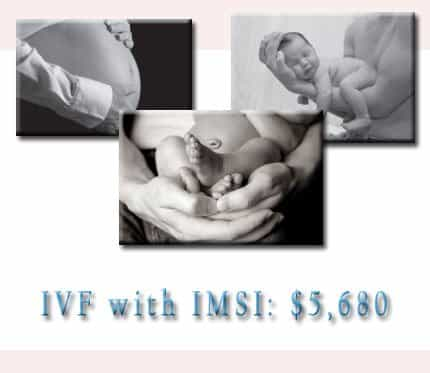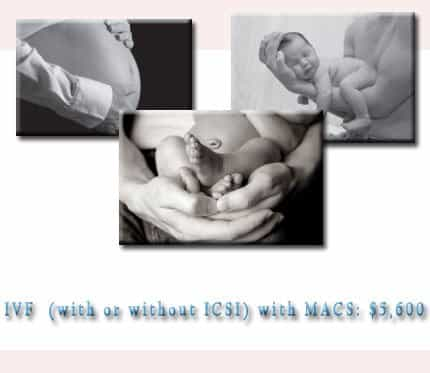
Best Male Factor Procedure With Own Eggs In Buenos Aires, Argentina
In Virto Fertilization Procedure in Buenos Aires, Argentina


When selecting an ART program, information is crucial. Important points for consideration  include the qualifications and experience of personnel, support services available, cost, convenience, pregnancy rates and multiple pregnancy rates. Every couple wants to use the most successful ART program, but many factors contribute to the overall success of a program. Cost-effectiveness ratio is one of the main issues to be considered. Charm treatment, psychological support and individualized assessment make a good program into a very good one, where you should feel comfortable.
include the qualifications and experience of personnel, support services available, cost, convenience, pregnancy rates and multiple pregnancy rates. Every couple wants to use the most successful ART program, but many factors contribute to the overall success of a program. Cost-effectiveness ratio is one of the main issues to be considered. Charm treatment, psychological support and individualized assessment make a good program into a very good one, where you should feel comfortable.

It is estimated that about 15% of couples will fail to achieve conception after 12 months  of unprotected intercourse. As the first treatment approach, most couples undergo controlled a controlled ovarian hyperstimulation with or without intrauterine insemination. As success rates is about 15% per cycle, ultimately, about half of these infertile couples will undergo an assisted reproductive technology procedure (ART) (in vitro fertilization (IVF) or intracytoplasmic sperm injection (ICSI)).
of unprotected intercourse. As the first treatment approach, most couples undergo controlled a controlled ovarian hyperstimulation with or without intrauterine insemination. As success rates is about 15% per cycle, ultimately, about half of these infertile couples will undergo an assisted reproductive technology procedure (ART) (in vitro fertilization (IVF) or intracytoplasmic sperm injection (ICSI)).
The basic steps in an IVF treatment cycle are ovarian stimulation, egg retrieval, fertilization, embryo culture, and embryo transfer.
To decide what the most adequate treatment is, some screening tests should be done:
- Hormones (FSH, LH, estradiol, TSH, Prolactin)
- Baseline Ultrasound
- Hysterosalpingography
- GC and Chlamydia culture
- Semen analysis


Intracytoplasmic Morphologically selected Sperm Injection (IMSI)
Intracytoplasmic morphologically selected sperm injection (IMSI) is a new development that may improve assisted reproduction pregnancy rates. This technology is a power light microscopy that allows embryologists to magnify sperm up to 6,000 times compared to the standard 200 to 400 times magnification associated with traditional fertilization approaches. The higher magnification can enable them to discard sperm which are less likely to produce a healthy embryo. The IMSI procedure may be a potential alternative to those couples whose semen analysis shows a severe teratozoospermia (severe alterations in sperm morphology).
Our medical and embryology staff has always been very concerned of morphology alterations. We have a very specialized team of biologists and embryologists that usually studies sperm samples in deepness. This way, we are more able to explain if there exists a systematic or a non-systematic pathology, and we assess about pregnancy chances using the own semen with a conventional ICSI.
IMSI makes it possible to discard sperm whose nuclei have an abnormal shape or contents. The optimum nucleus is smooth and symmetric, with an oval configuration. Using IMSI, the embryology team can identify any malformation or vacuole in the nuclear mass and they can choose the spermatozoa with optimal length and width.
Implantation and pregnancy by ICSI is associated with morphological nuclear normalcy of sperm. Sperm with a morphologically abnormal nucleus usually have low fertility potential, but some with certain nuclear abnormalities may still be able to produce pregnancy following ICSI. IMSI is still an investigational technology that is supposed to be at least as good as conventional ICSI, but has the potential of having better results in those cases that may benefit from it. Some papers have already published increased pregnancy rates. Nowadays, all over the world, hundreds of children have already born after doing IMSI.


Sperm DNA Fragmentation and Early Markers of Sperm Apoptosis
(Tunel Assay and measurement of Activated Caspases, and Annexin V Columns - MACS)Nowadays, standard assessment of the semen includes mainly the analysis of its concentration, motility and morphology. However, some studies have already showed that there are some other predictive variables in an IVF cycle: DNA fragmentation and early markers of apoptosis (programmed cell death) are important issues.
Tunel assay and measurement of activated caspases allow us identifying if the semen sample has a high index of DNA fragmentation and/or high level of early markers of apotosis, giving the patients a more precise assessment about their prognosis. Besides, the development of an experimental technique called Annexin V columns would let the embryologists "filter" the sperms with theses markers, and choose the good ones for doing the ICSI.
In CEGYR, semen evaluation is very important. There is a team of biologists working on this issue day by day. Both techniques, the evaluation of those markers (Tunel assay and activated caspases) and the filtering of the best sperms (Annexin V columns) are performed with initial very good results.





.png)




.png)

.png)
